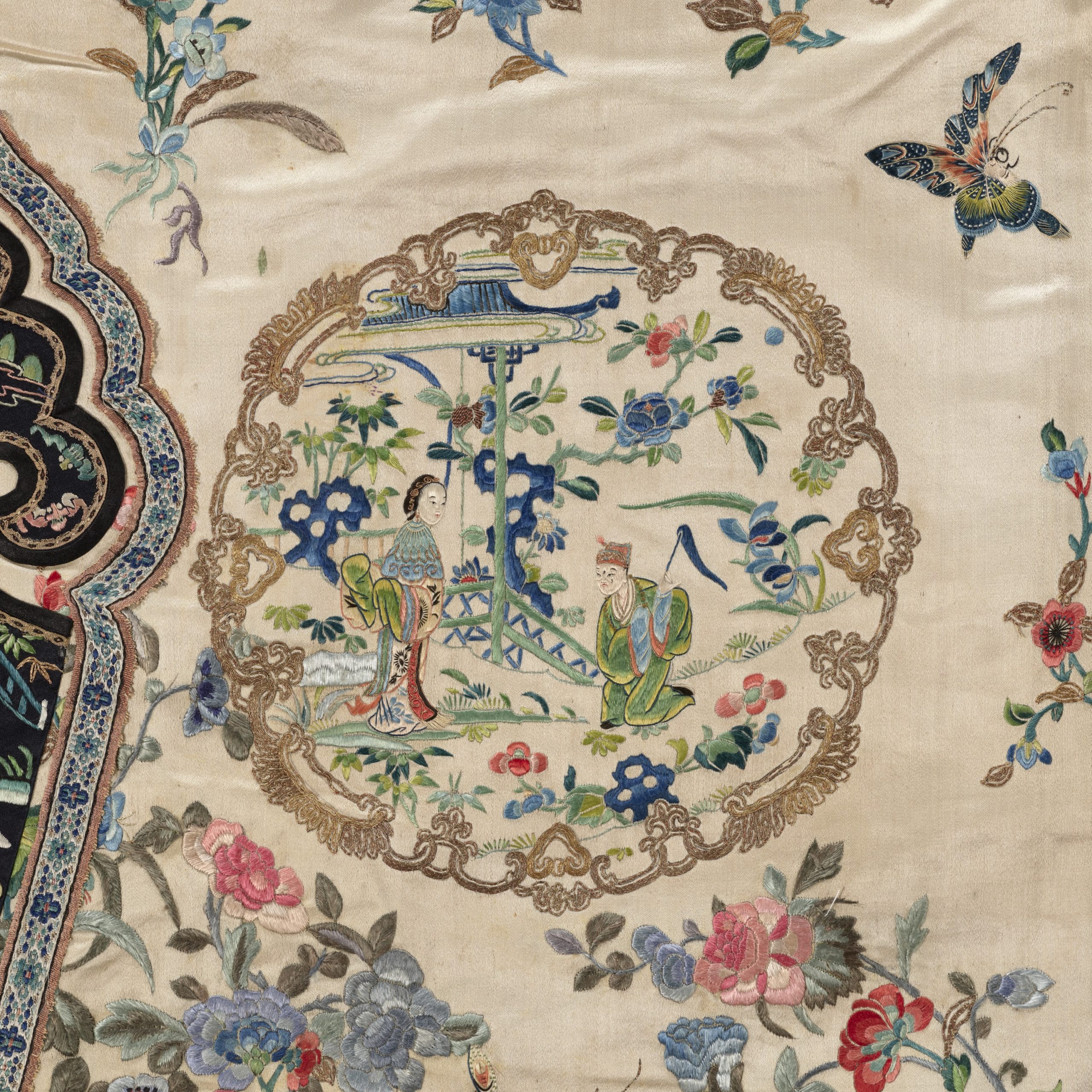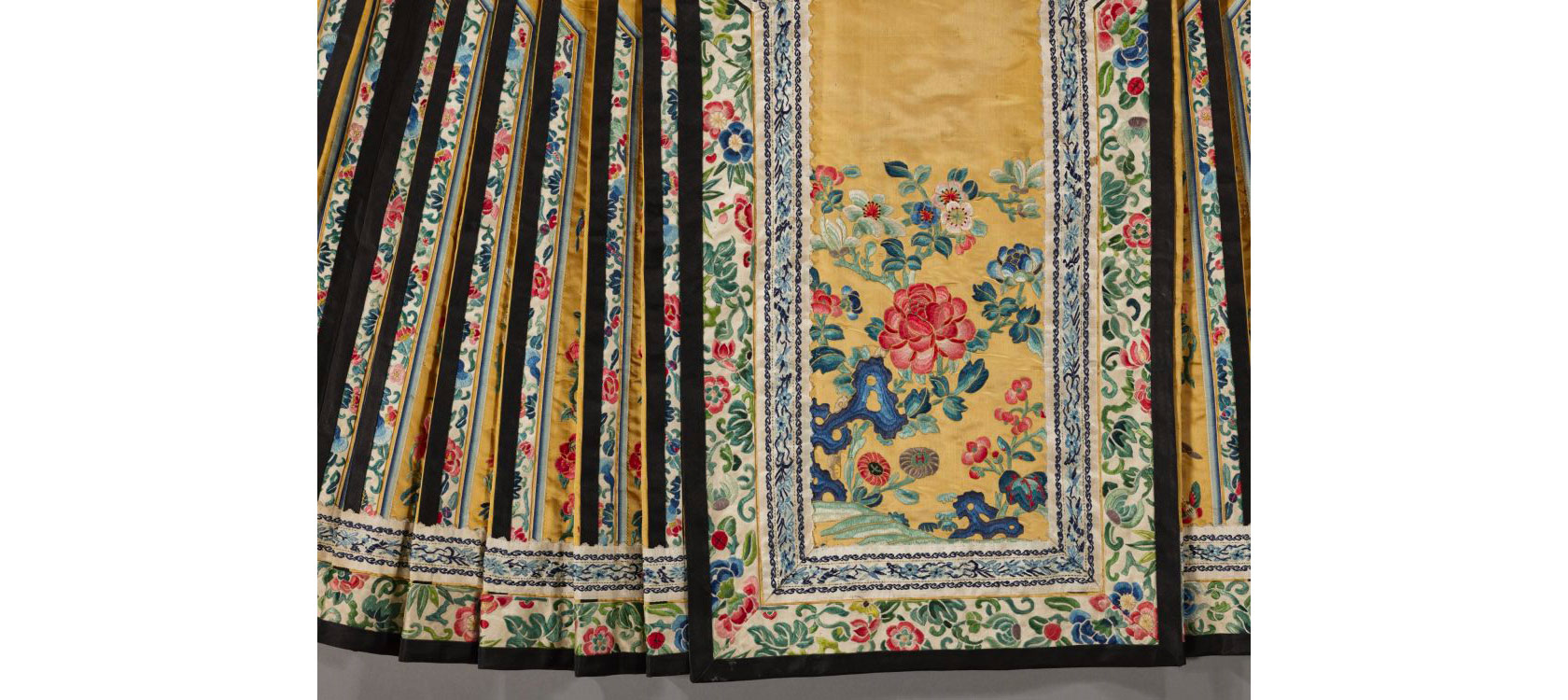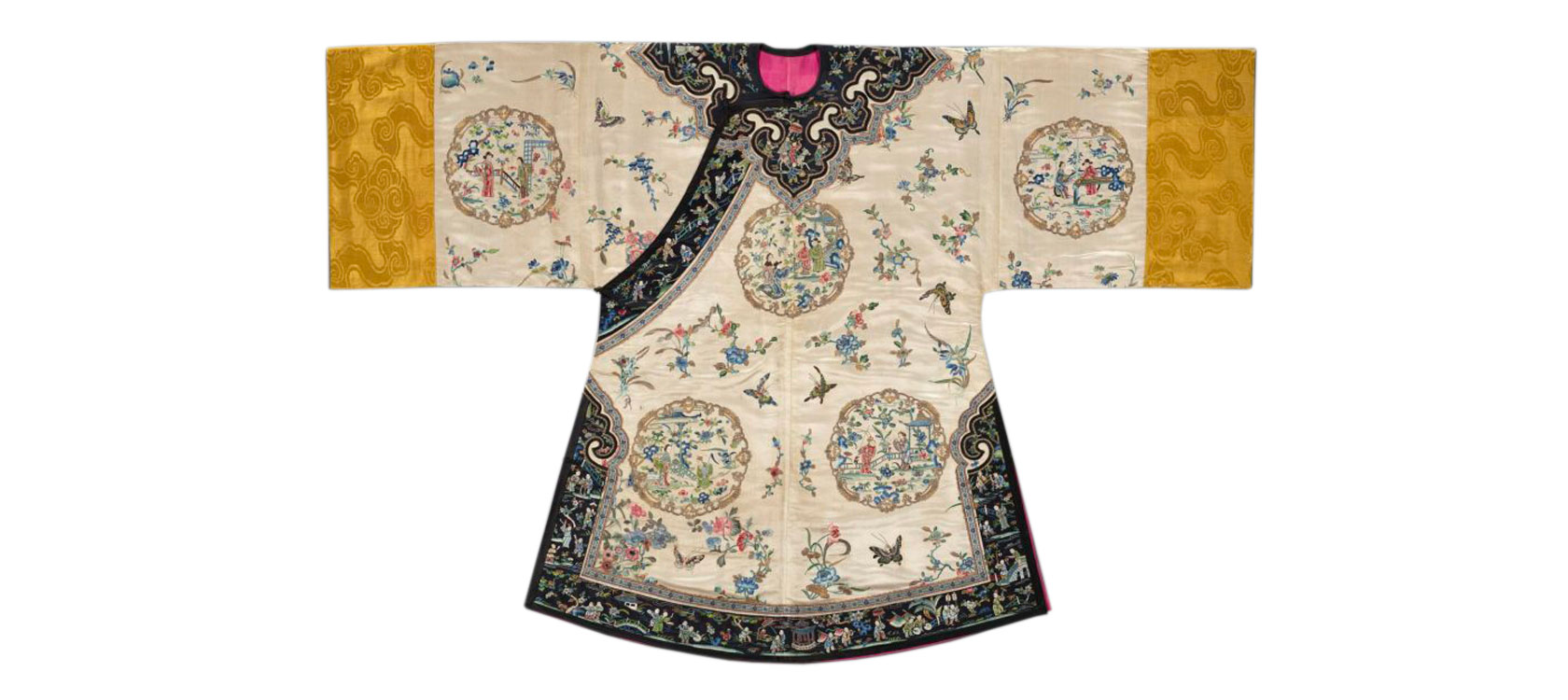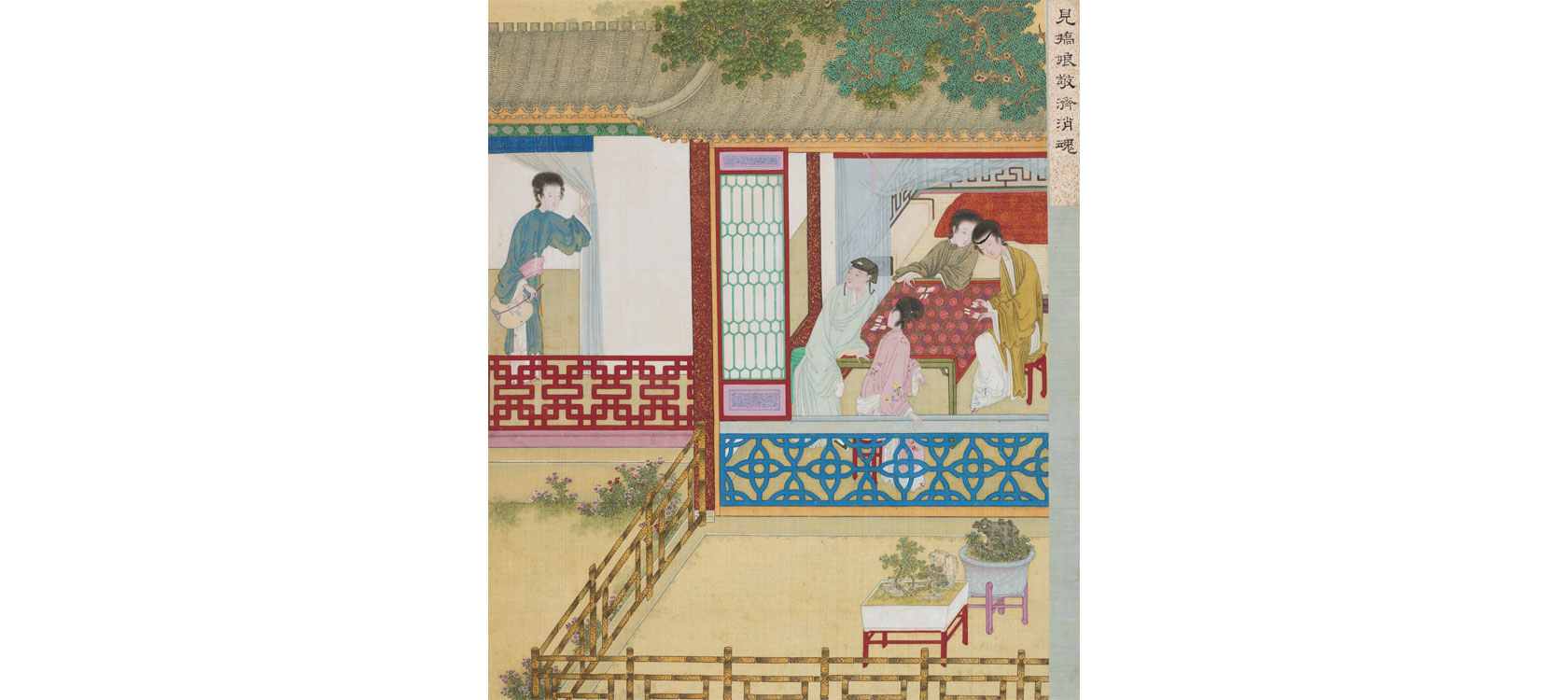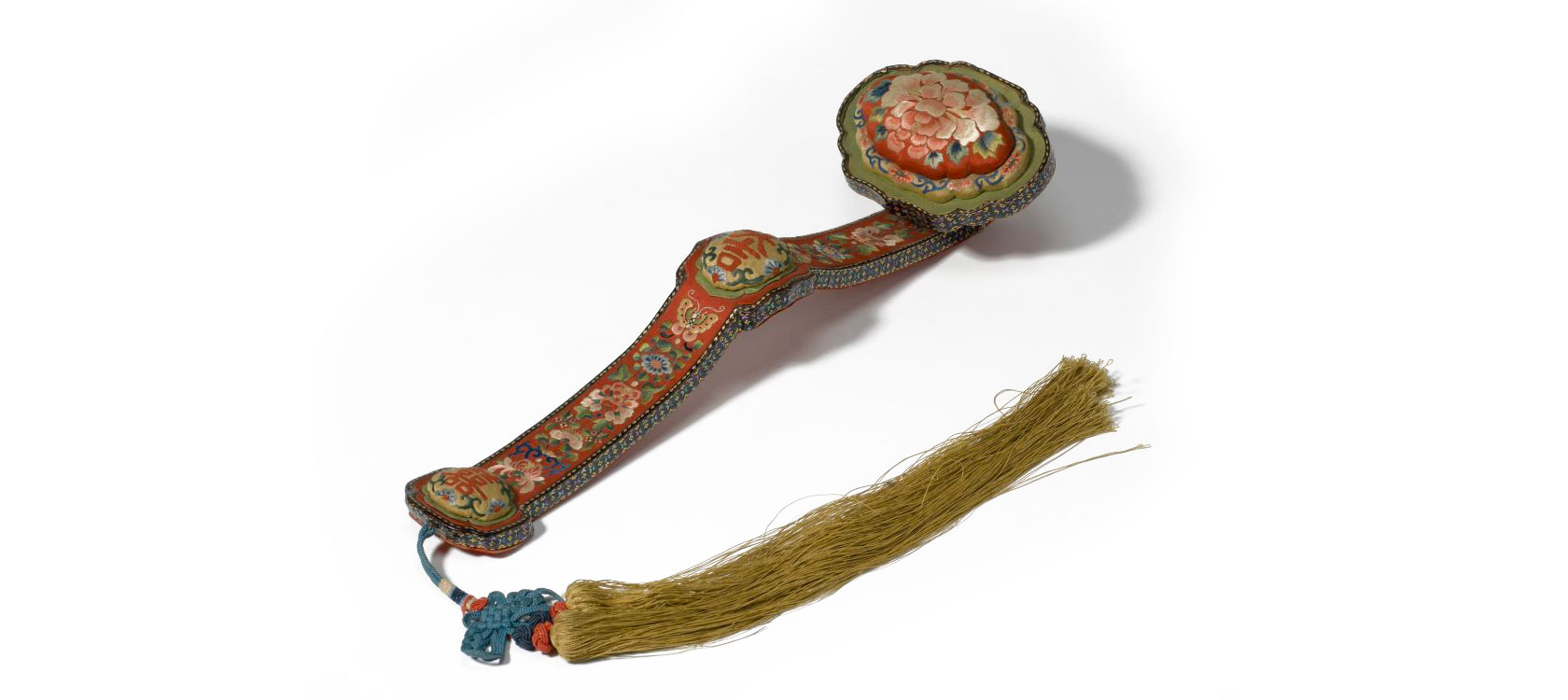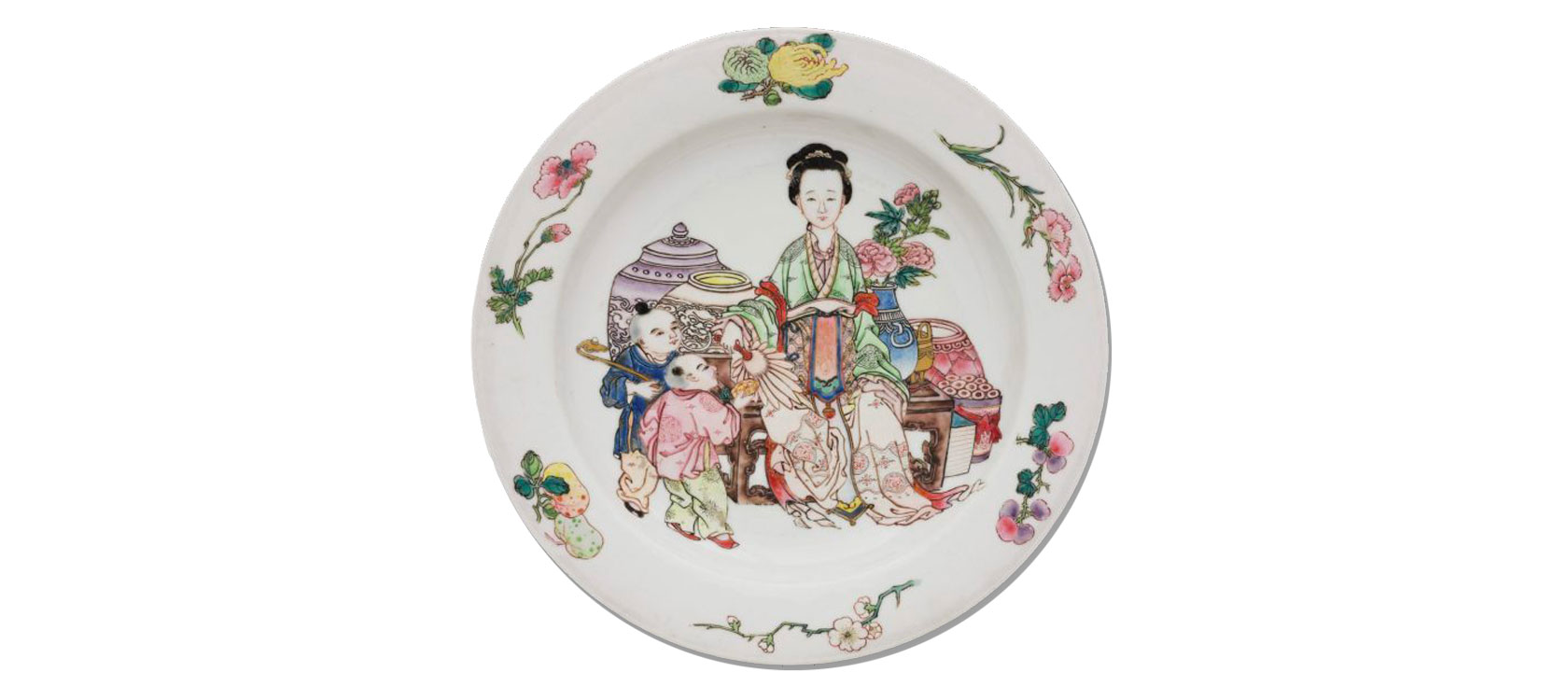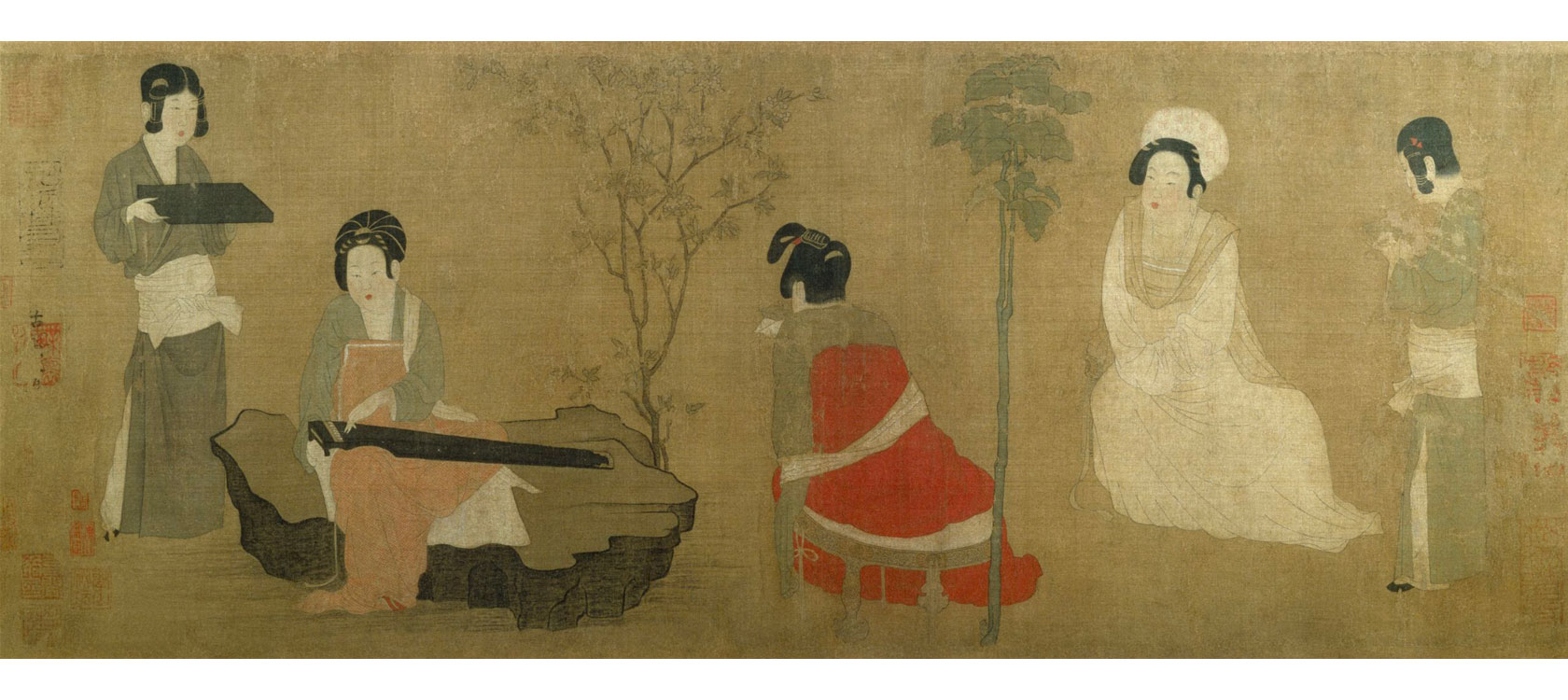STARTS
Nov 18, 2023
Ends
May 19, 2024
G222
Glamorous Women
Glamorous Women: Gender and Fashion in Chinese Art
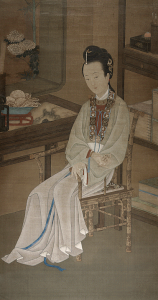
As early as 600 B.C.E., Chinese women’s roles in society were primarily centered within the home. These roles were informed by Confucianism, which promoted their view of a harmonious societal order, elevating men as the household authorities and assigning women to domestic roles. As a result, women’s contributions to society were largely overlooked.
However, art depicting women and fashions created by and for women underscore their crucial impact as tastemakers in visual culture from the 1100s to 1800s. Early works like shinühua (painting of gentlewomen) portrayed women as exemplary models of beauty and femininity. Artists later revamped this tradition to illustrate women as provocative seductresses in popular Chinese stories. By the 1800s, women used fashion and accessories to transform themselves from muted muses to fashionable trendsetters in Chinese society.
By looking closely at visual clues and symbolism embedded within these works, we can learn more about women’s lives, their beauty ideals, and their overall influence on art and culture. Viewed together, we see how women impacted Chinese art and culture much more fully than what we know from written history.
Organized by The Nelson-Atkins Museum of Art. Generous support provided by the E. Rhodes and Leona B. Carpenter Foundation.
Image Captions:
Header image: (Detail) Lady’s Coat Embroidered with Theater Images, China, mid-19th century, Qing Dynasty (1644–1911). Embroidered satin, 42 inches (106.68 cm). The Nelson-Atkins Museum of Art, Kansas City, Missouri. Gift of Adela Van Horn, 45-34.
Top left: Lady in the Library, China, 18th century, Qing Dynasty (1644–1911). Hanging scroll; ink and color on silk, 138 x 43 3/4 inches (350.52 x 111.13 cm). The Nelson-Atkins Museum of Art, Kansas City, Missouri. Purchase: William Rockhill Nelson Trust, 31-136/14.
Slideshow: (Detail) Yellow Skirt with Rose Embroidery, China, 19th century. Embroidered satin, 48 × 37 3/4 inches (121.92 × 95.89 cm). Gift of Mrs. David Beals, 44-63/1.
Lady’s Coat Embroidered with Theater Images, China, mid-19th century, Qing Dynasty (1644–1911). Embroidered satin, 42 inches (106.68 cm). The Nelson-Atkins Museum of Art, Kansas City, Missouri. Gift of Adela Van Horn, 45-34.
Jingju Losing his Mind upon Seeing Golden Lotus, from the album Illustrations to the Plum in the Golden Vase (Jinpingmei), Chinese, 18th century. Album leaf, ink and color on silk. 15 1/2 x 12 1/2 inches (39.37 x 31.75 cm). Purchase: William Rockhill Nelson Trust through the George H. and Elizabeth O. Davis Fund, 2006.18.7.
Scepter for Wedding, China, Qing Dynasty (1644-1911). Wood, embroidered silk, 15 inches (38.1 cm). The Nelson-Atkins Museum of Art, Kansas City, Missouri. Purchase: William Rockhill Nelson Trust, 34-64.
Plate, China, Qing Dynasty (1644-1911). Enamel porcelain, 8 1/8 inches (20.6375 cm). The Nelson-Atkins Museum of Art, Kansas City, Missouri. Purchase: Willliam Rockhill Nelson Trust, 60-73/1.
After Zhou Fang, Chinese (730 – 800 C.E.). Palace Ladies Tuning the Lute, Song Dynasty (960-1279), 12th century. Handscroll; ink and color on silk, 11 x 29 5/8 inches (28 x 75.3 cm). The Nelson-Atkins Museum of Art, Kansas City, Missouri. Purchase: William Rockhill Nelson Trust, 32-159/1.
PROGRAMS
Explore and Create: Inspired by Glamorous Women
- One-session class Friday, April 5
- Adults (16+) | Classrooms 4 & 5
- Public $60 | Members $48
- Instructor: Michelle Chan
Delve into the exquisite creations showcased in the Glamorous Women, Gender & Fashion exhibition. Unravel the embroidered theater images by exploring the gallery and archived documents with the Curator of Chinese Art Ling-En and Spencer Reference Library staff. Let your creativity flourish as you create your very own artwork. All supplies are provided. Sips and Snacks are available for purchase in Bloch Lobby.
Michelle Chan is an interdisciplinary fiber artist based in Kansas City, Missouri. Her work addresses being an American-born Chinese through the lens of pop culture and consumerism.
Common Threads: Fashion, Gender, Community
- Sunday, April 14 | 2–3:30 p.m.
- Public $7 | Members $5
- Lens 2
Explore Chinese fashion and identity three ways, with literary scholar Eleanor Lim-Midyett, artist Michelle Chan, and Nelson-Atkins Curator of Asian Art Ling-en Lu. Each presenter will share how their work intersects with ideas in the exhibition Glamorous Women: Gender and Fashion in Chinese Art, then engage in conversation. We invite you to create in community during the program: you are welcome to bring a small, portable textile-based project-in-progress (hand-stitching, knitting, crochet only). We’ll save time at the end to share, for those who are interested.
